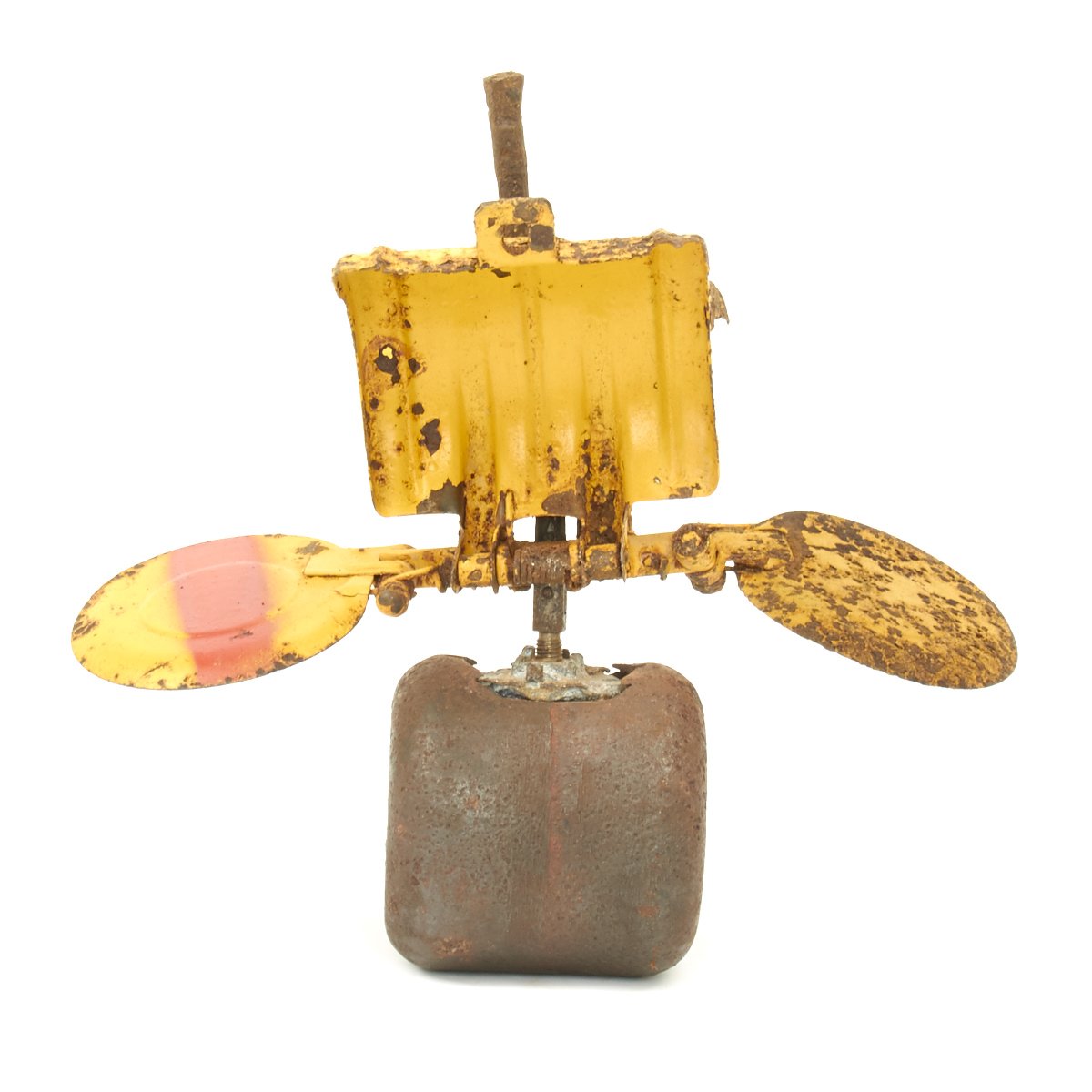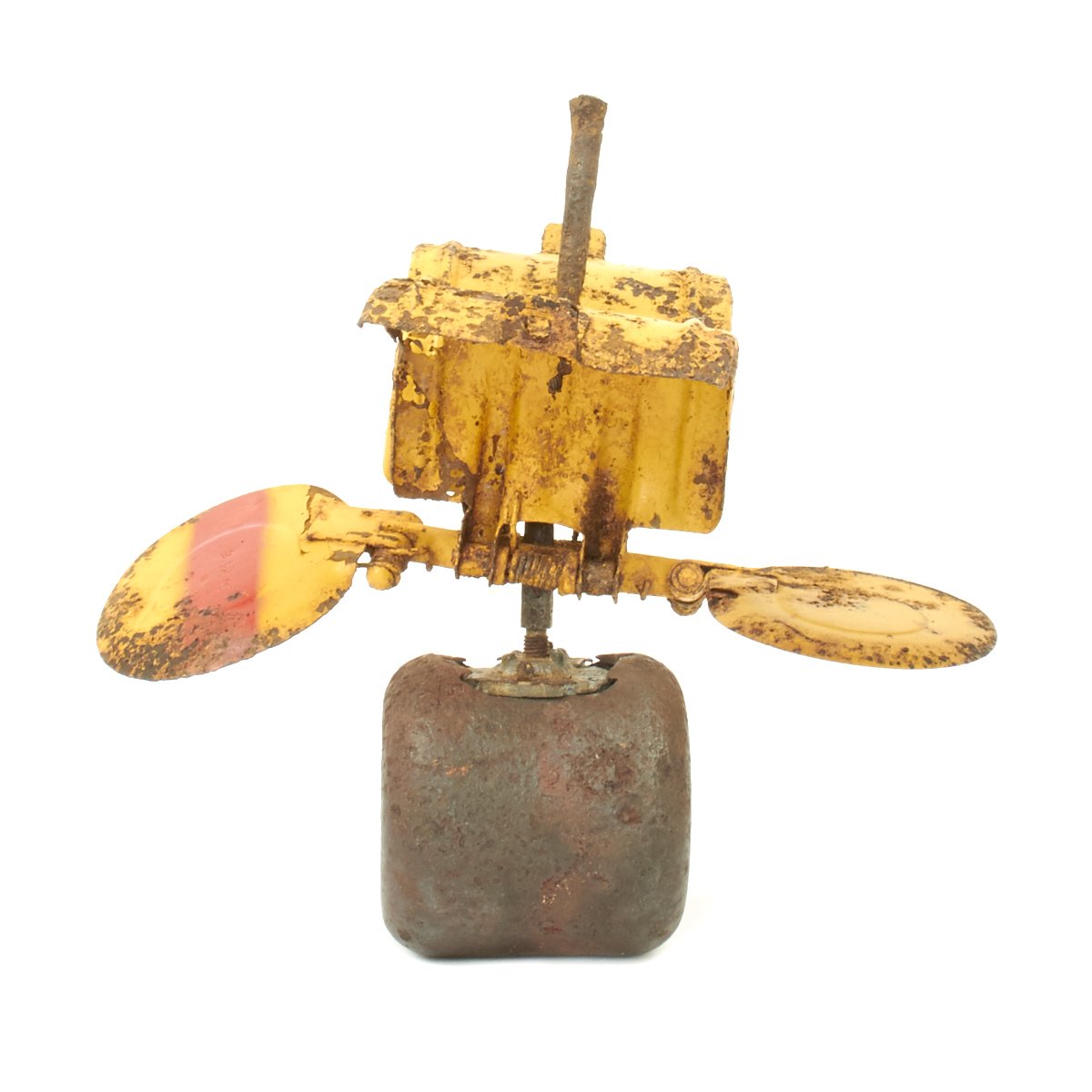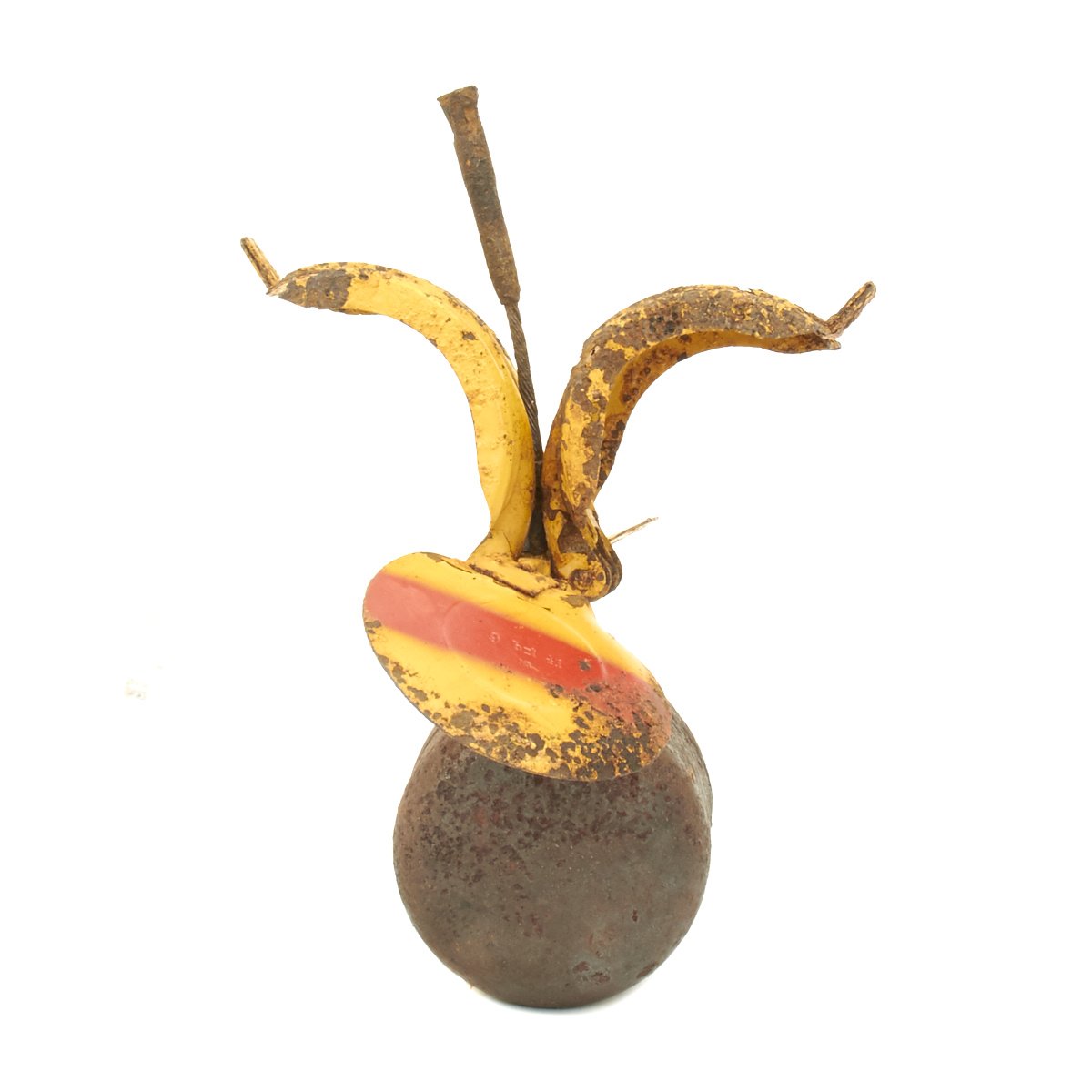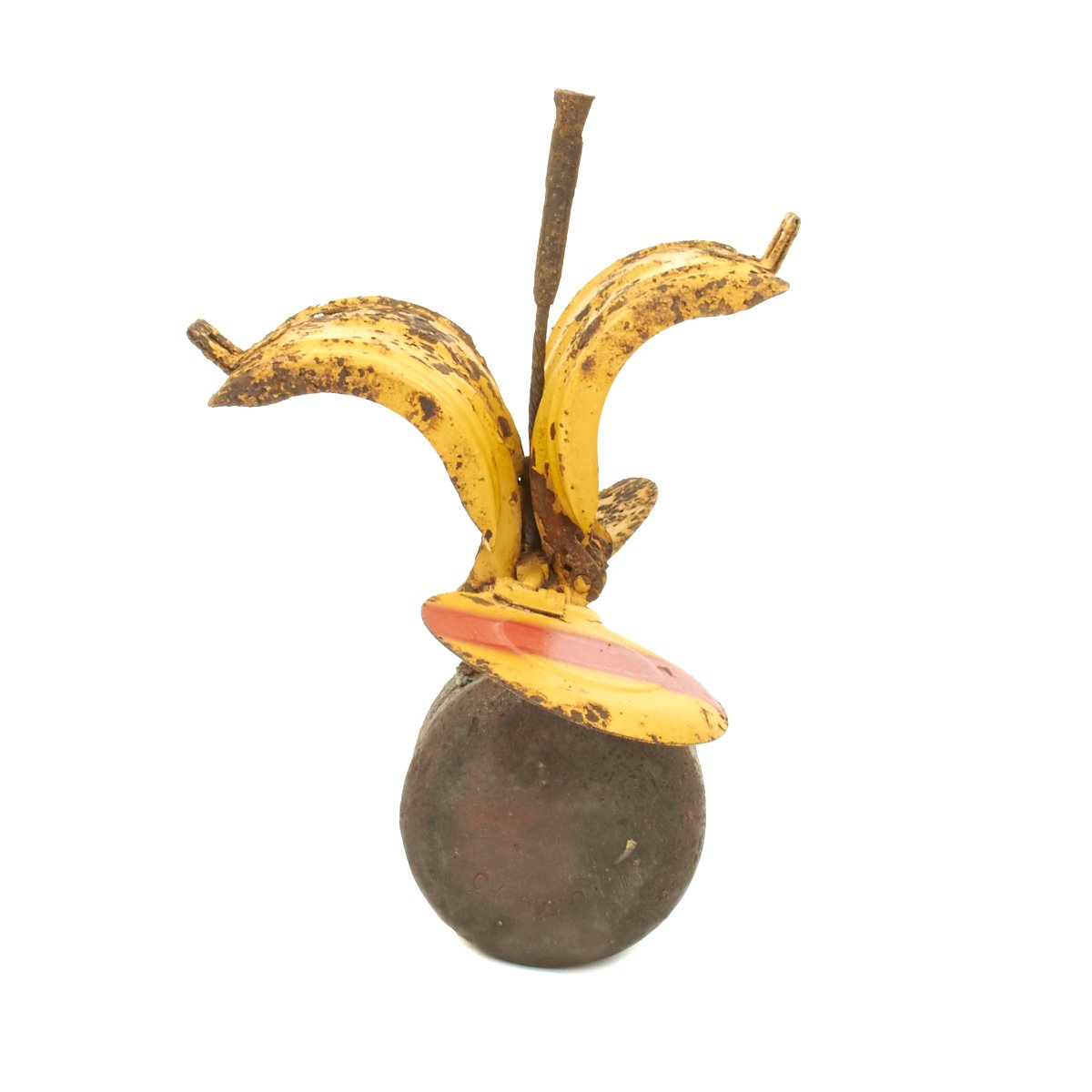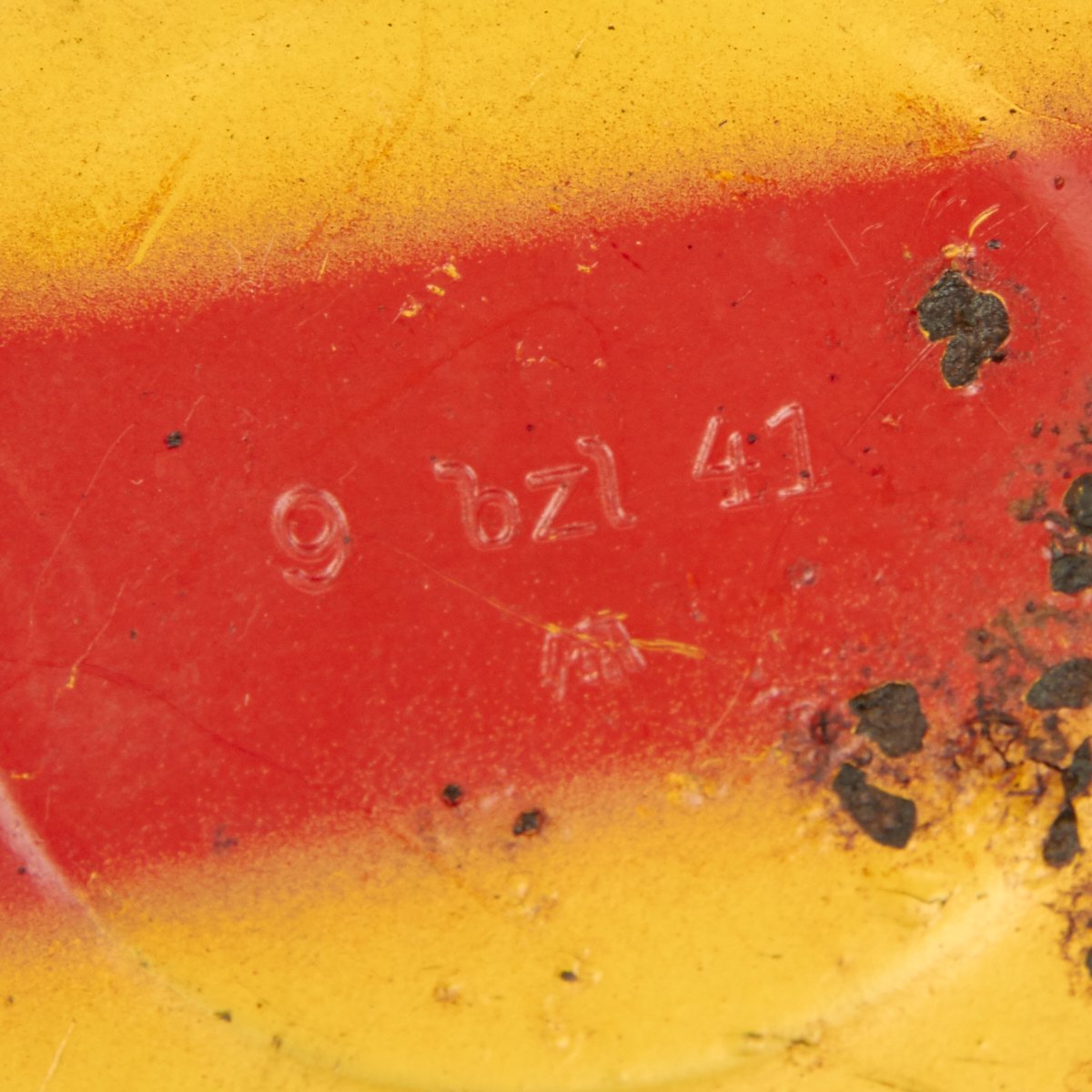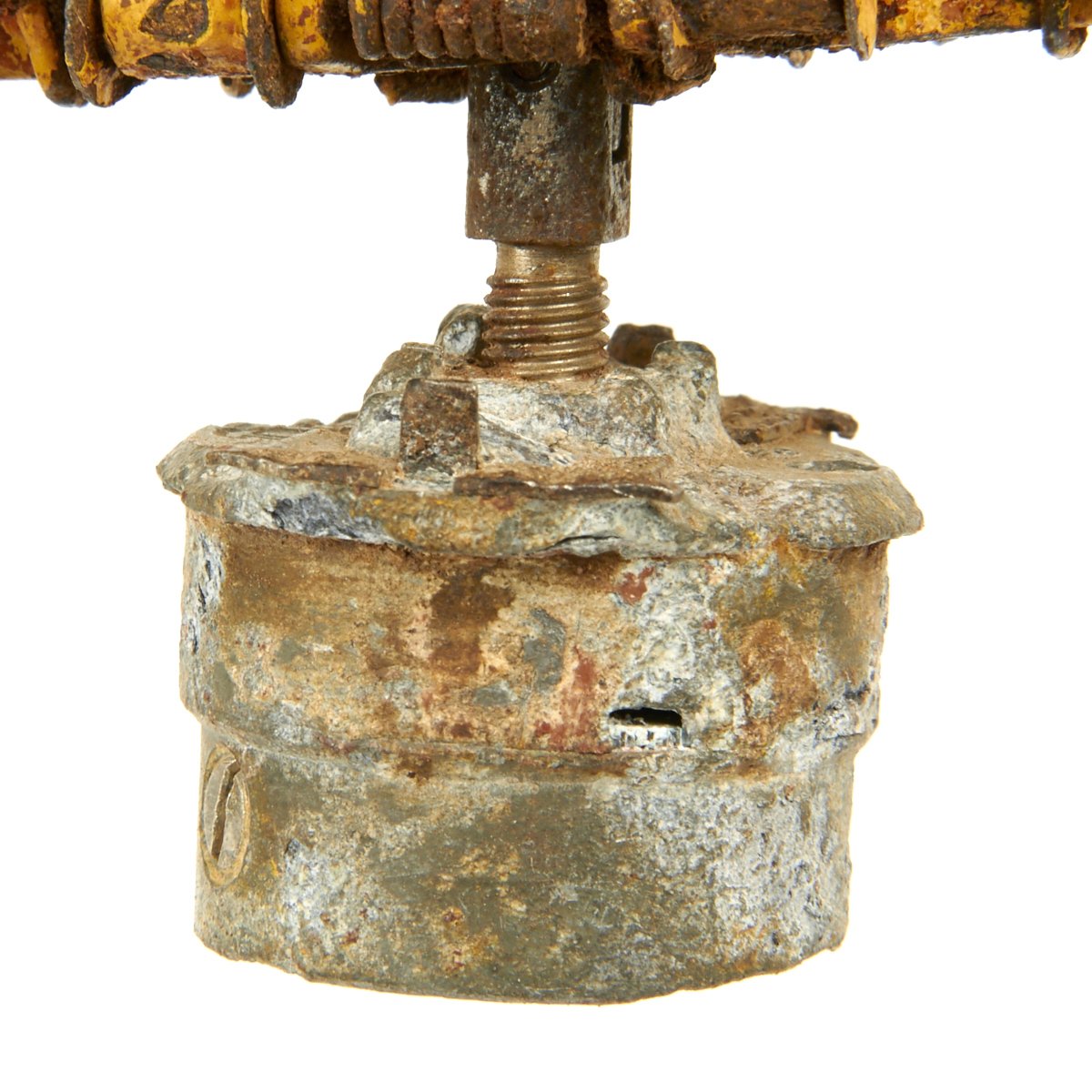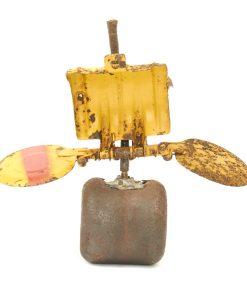Original German WWII Butterfly Bomb SD-2 Sprengbombe Dickwandig 2 kg – Dated 1941 Original Items
$ 995,00 $ 248,75
Original Item: Only One Available. This is an extremely rare 1941 dated original inert German Sprengbombe Dickwandig 2 kg, SD2, or Butterfly Bomb, used during WWII.
This fine example is complete and empty (non-functional). It is incredibly rare. A “wing” is clearly marked 9 bzl 41. bzl stands for Fredrich Siemens–Werke AG – Wein 146, Wagramerstr.96 (Austria) and it was manufactured in 1941. It retains the original yellow and red paint and shows areas of rust and pitting but is in overall very good solid condition. These are nearly impossible to find on the market as they are banned from US import.
The SD-2 was used against British cities, dropped along with other high explosive and incendiary ordnance. A small weapon (about 2kg), its primary purpose was as a booby trap device, to slow the progress of damage control after a bombing raid.
A common configuration for the SD-2 was to load them into a container, holding 23, which resembled a 50kg bomb. When dropped from a plane, the container immediately opened, emptying its lethal cargo.
There were five different kinds of fuzes that could be used for the SD-2 including impact, air burst, long delay and anti-handling. The bomb has a lethal radius of up to 70 yards.
After the bomb is released, a torsion spring pops the wings open. Air drag pulls that assembly to the end of the connecting piece where it locks and proceeds to rotate, unscrewing the threaded arming spindle. Once the spindle completes about 10-turns, it arms the fuze. Once armed, there is no way to defuze the bomb and must be destroyed in place.
“They were found on roofs, on beds, hanging by one wing through ceilings, and the only way for the bomb disposal squads to deal with them was to blow them up with a charge just wherever they happened to be.
“A Grimsby fireman told me that “they tied the whole town up for three days – everything came to a standstill.”
“A German prisoner of war told our bomb disposal people that the Germans dropped some containers of butterfly bombs onto a race course near Paris, in order to give their bomb disposal squads the experience of coping with them. The result was a number of German casualties. Very thorough!”
Commander Sir Aylmer Firebrace, C.B.E, R.N.
Chief of Fire Staff, British National Fire Service
Fire and the Air War
National Fire Protection Assoc. (U.S.), 1946
A Butterfly Bomb (or Sprengbombe Dickwandig 2 kg or SD2) was a German 2 kilogram anti personnel submunition used by the Luftwaffe during the Second World War. It was so named because the thin cylindrical metal outer shell which hinged open when the bomblet deployed gave it the superficial appearance of a large butterfly. The design was very distinctive and easy to recognize. SD2 bomblets were not dropped individually, but were packed into containers holding between 6 and 108 submunitions e.g. the AB 23 SD-2 and AB 250-3 submunition dispensers. The SD2 submunitions were released after the container was released from the aircraft and had burst open. Because SD2s were always dropped in groups (never individually) the discovery of one unexploded SD2 was a reliable indication that others had been dropped nearby. This bomb type was one of the first cluster bombs ever used in combat and it proved to be a highly effective weapon. The bomb containers that carried the SD2 bomblets and released them in the air were nicknamed the “Devil’s Eggs” by Luftwaffe air and ground crew.
Fast Shipping with Professional Packaging
Thanks to our longstanding association with UPS FedEx DHL, and other major international carriers, we are able to provide a range of shipping options. Our warehouse staff is expertly trained and will wrap your products according to our exact and precise specifications. Prior to shipping, your goods will be thoroughly examined and securely secured. We ship to thousands clients each day across multiple countries. This shows how we're dedicated to be the largest retailer on the internet. Warehouses and distribution centres can be located throughout Europe as well as the USA.
Note: Orders with more than one item will be assigned a processing date depending on the item.
Before shipping before shipping, we'll conduct a thorough inspection of the items you have ordered. Today, the majority of orders will be delivered within 48 hours. The delivery time will be between 3-7 days.
Returns
The stock is dynamic and we cannot completely manage it because multiple stakeholders are involved, including our factory and warehouse. So the actual stock may alter at any time. It's possible that you may not receive your order once the order has been made.
Our policy is valid for a period of 30 days. If you don't receive the product within 30 days, we are not able to issue a refund or an exchange.
You can only return an item if it is unused and in the same state as the day you received it. You must have the item in its original packaging.
Related products
Uncategorized
Uncategorized
Uncategorized
Uncategorized
Uncategorized
Uncategorized
Uncategorized
Band of Brothers ORIGINAL GERMAN WWII Le. F.H. 18 10.5cm ARTILLERY PIECE Original Items
Uncategorized
Uncategorized
Uncategorized
Uncategorized
Uncategorized
Uncategorized
Armoured Fighting Vehicles of the World: AFVs of World War One (Hardcover Book) New Made Items
Uncategorized
Angolan Rebel 1970s era 60mm Inert Display Mortar from Angolan Civil War Original Items
